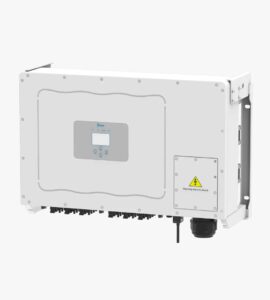Mr. Ambadas M Handore | Managing Director

The transformer oil basically functions as a liquid dielectric medium and as a coolant in transformers and in switchgears. This is a pure hydrocarbon mineral oil and its characteristics are generally in accordance with IS. The electrical apparatus and equipment operate under conditions of high electrical stress and also are exposed to conditions of aging within them. The transformer oil acts as an electrical divider between core and the tank and also as a medium to dissipate heat. The safety and safe operation of such equipment together with uninterrupted operation is of paramount importance. The presence of air and the effect of temperature gives rise to slugging and acidity and thereby deteriorates the transformer oil requiring periodic filtration / replenishment.
CHARACTERISTIC OF TRANSFORMER OIL :-
The purpose of use of transformer oil is dissipate heat by conduction through the solid insulation to the oil which by conservation effects either alone or aided by forced circulation flows over the cooling surfaces. The efficiency of this process is essentially dependent upon the oil having low viscosity which falls with increase of temperature .
(1) Appearance
The oil shall be clear and transparent and free form suspended matter and sediment. Light colour for petroleum products generally indicates degree of refining, whereas cloudy or foggy appearance indicates the presence of moisture. A greenish tinge indicates the presence of copper slats and acrid smell indicates the presence of volatile acids which cause corrosion.
(2) Density at 27 0 C
The value should be 0.89 gm/cm3 maximum which indicates a mass of substance per unit volume.
(3) Kinematic Viscosity at 27 0 C
The viscosity test is a measurement of the average rate at which an oil will flow under specified condition.
(4) Interfacial tension at 27 0 C
The interfacial is a measure of counter-action of polar compounds in an oil which may come form deterioration products or contaminants. The value is expressed in Newton per meter and a high IFT value is an indication that the oil is neither deteriorated not contaminated with soluble polar compounds.
(5) Flash point
The flash point of oil is the lowest temperature at which the vapors from oil will ignite momentarily on application of a flame under test condition. It is relevant to safety transformer and switch gears as regards.
(6) Pour point
It is the lowest temperature expressed as a multiple of 3 0C at which the oil is observed to flow when cooled. In transformers freezing of insulating oil may create trouble in Buchholz relay.
(7) Neutralization value
The acidity of neutralization value is defined as the number of milligrams of KOH required to completely neutralize the acids present in one gram of oil. It is the gauge of extent of deterioration of oil or contamination. Oil should be reconditioned if the value of acidity is 0.5 to 1 mg KOH /gm and should be discarded if the value is above 1 mg KOH/gm.
(8) Corrosive sulphar
The test is designed to detect objectionable quantities of free sulphar and corrosive sulphar compounds and the presence of corrosive sulphar compound will result in deterioration of the metal in contact.
(9) Oxidation stability
Transformer oil in service undergoes change in physical, chemical and electrical properties and this is called ageing. With ageing beyond a certain limit a coating is formed over the oil immersed parts and this is resistant to heat transfer. This is due to formation of acid sludge’s.
(10) Oxidation inhibitor
This is for uninhibited oil. But for inhibited oil treatment of oil with 0.3 % of anti-oxidant by weight will meet the requirement.
(11) Water Content
Water in transformer oil remains in soluble state as well as in free form. Solubility of water in oil is influenced by temperature and condition of oil as oil deteriorates its water solubility increases.
(12) Electric strength (Oil Breakdown Test)
It is the voltage at which the electrical failure occurs in a sample of oil tested under prescribed condition. It indicates the presence of free or suspended but not dissolved water and also determines whether oil is in safe operating condition or not.
This is being tested with special designed instruments. Manual or Motorised or Micro Processor Based Automatic Models are available in the market.
Instrument should have all the relevant features to do the test, also should comply with National and International standards of Oil testing for BDV Test.
Main Features
- Fully automatic Microcontroller based operation
- Fully compatible with IEC 60156 : 1995 and other 16 National International Standards
- Output Voltage : 0 – 100kV AC
- Rate of Rise of Voltage : 0.5 to 5.0 KV/sec
- 10 micro sec Tripping Timing
- Precise voltage measurement
- True sine high-voltage on electrodes
- All safety Interlock
- Built-in printer
- 100 Internal test data storage
- PC connectivity
Main Features
- Automatic Motorised or Manual based Operation.
- Fully compatible with IEC 60156 : 1995 & IS: 6792
- Output Voltage : 0 – 100kV AC
- Rate of Rise of Voltage : 2.0 KV/sec
- 1 milli sec Tripping Timing
- KV meter continues to indicate breakdown voltage
Even after breakdown
- Test voltage can be held at any desired level for
Withstanding test
(13) Dielectric Dissipation factor
Dielectric dissipation factor of an insulation oil is the tangent of the loss angle. Low power factor indicates poor quality of oil and its value is influenced by temperature, voltage and frequency. The oil should be reconditioned if the value is within 0.01 to 0.1 and should be discarded if it is above 0.01.
(14) Specific resistance
Specific resistance in ohm –cm of a liquid is the ratio of D.C. potential gradient in volts /cm paralleling the current flow within the specimens to the current density in ampere sq. cm at a given instant of time and under prescribed condition. The oil should be reconditioned if the value is between 1 x 10 12 and 10 x 10 12 ohm-cm and should be reclaimed or replaced if the value is below 1 x 10 12 ohm-cm at 27 0 Cs.
Parameters
- Tan Delta
- Dielectric Constant
- Volume Resistivity
TECHNICAL SPECIFICATIONS
Tan Delta & Volume Resistivity
- Test Voltage : 0 to 2000 VAC
- Accuracy : 1.0% 1Volt,
- Resolution: 1Volt.
- Test Frequency : 50 Hz
- Dielectric Constant Range : 1.0 to 20.0
- accuracy 1
- Resolution: 0.01
- Dielectric Tan Delta Range : 0.01% to 200%
- Accuracy : 1% 0.05%,
- Resolution: 0.01%
Resistance & Resistivity
- Test Voltage DC : 500 / 1000 VDC
- Resistance Range : 106 to 1010 Ohm
- Resistivity Range : 109 to 1012 Ohmcm
Three Terminal Oil Cell
- Construction : 3 Terminal Configuration
- Cell Capacitance : 55pF ±1pF
- Material : Stainless steel with Teflon spacers
- Electrode Spacing : 2mm
- Volume : 45ml
Follow testing procedures as prescribed by the standards with proper measurement instruments.






